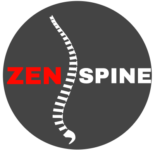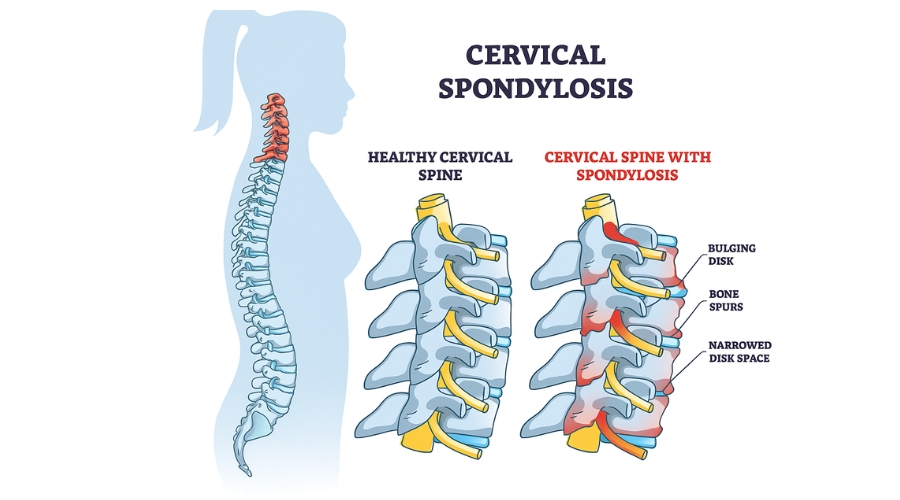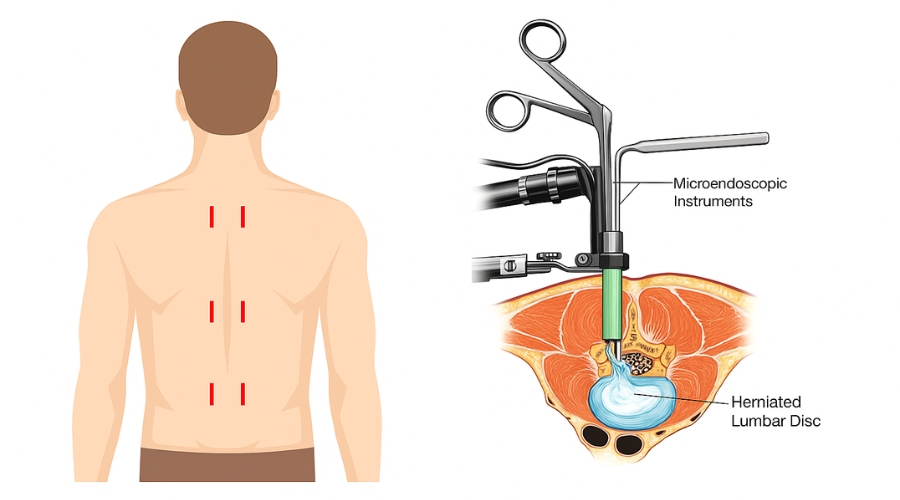Living with long-standing back or neck pain can be frustrating. For many patients, spine surgery is considered only after all non-surgical methods have been tried. But here’s something most people don’t realise no two spine surgeries are exactly the same.
Dr. Rakesh Dhake, a spine surgeon at Zen spine Clinic, understands that every spine condition is unique. More importantly, every patient has a different lifestyle, pain tolerance, and healing pattern. That’s why personalised planning is the first step in his approach, not the surgery itself.
Let’s look at how spine surgery is made more effective and safer when it’s customised to your body, your condition, and your goals.
Understanding When Spine Surgery is Considered

Before talking about customisation, it’s important to know when surgery is even necessary.
Most spine like slipped discs, sciatica, or lumbar stenosis, start with symptoms such as:
- Back pain that doesn’t improve with rest
- Pain radiating to legs or arms
- Numbness or tingling
- Difficulty walking or sitting for long
In many cases, non-surgical options like physical therapy, medications, and spinal injections work well. But if:
- Pain continues for more than 6–12 weeks
- There’s nerve compression or spinal instability
- You experience muscle weakness or bladder issues
Then spine surgery becomes a serious option.
But what happens after that decision? That’s where personalisation begins.
Diagnosis: The First Step in Personalisation
Dr. Rakesh Dhake starts with an in-depth evaluation that includes:
- Physical examination
- MRI or CT scan analysis
- Understanding your day-to-day activities
- History of injuries or previous surgeries
This helps in identifying the exact source of pain, which could be a compressed nerve, disc bulge, or joint issue. Based on this, a plan is created that avoids unnecessary procedures and focuses only on what’s needed.
Choosing the Right Type of Spine Surgery
There is no one-size-fits-all spine surgery. Depending on your condition, Dr. Rakesh Dhake may recommend:
Minimally Invasive Spine Surgery (MISS)
For patients with small disc herniations or mild spinal stenosis, this technique uses small cuts and special instruments. It means:
- Less pain after surgery
- Shorter hospital stay
- Faster recovery
This is often preferred for working professionals who want to return to daily life quickly.
Spinal Decompression
Used when nerves are compressed due to conditions like spinal stenosis or slipped disc. It relieves pressure and improves mobility.
Spinal Fusion
Done when there’s instability in the spine, often from injury or advanced disc damage. It involves fusing two or more vertebrae to prevent abnormal movement.
Disc Replacement Surgery
Instead of removing and fusing the disc, an artificial disc is used. This preserves natural movement and is usually recommended for younger patients.
Each of these options is carefully selected based on:
- Age
- Physical demands of the patient
- Location of the problem
- Extent of nerve involvement
Customising Surgery Based on Patient Lifestyle
Dr. Rakesh Dhake doesn’t just look at scans. He looks at you as a person. Are you a working parent who lifts your child regularly? Are you a senior citizen who lives alone? Or a corporate professional with long hours at a desk?
Here’s how lifestyle affects your surgery plan:
- Young adults with disc issues: Focus is on motion-preserving surgery like disc replacement
- Senior citizens with degenerative spine: Aim is stability with minimal disruption
- Patients with physically demanding jobs: Stronger fixation and longer rest periods are advised
- Desk-bound professionals: Posture correction and ergonomic changes are added to the treatment plan
This way, surgery supports your routine not disrupts it.
Anaesthesia and Pain Control: Tailored to Suit You
Pain control after surgery is also personalised. Based on your medical history, Dr. Rakesh Dhake may choose:
- Local anaesthesia for smaller procedures
- Regional blocks to reduce reliance on painkillers
- Multimodal pain therapy to speed up walking and recovery
This reduces complications, especially in diabetic or elderly patients.
Recovery Timeline and Rehab Plan
Each patient’s body heals differently. That’s why post-surgery rehab is never generic at Zen spine. Depending on your condition, you may be given:
- Physiotherapy for flexibility and strength
- Postural training to avoid re-injury
- Nutritional advice to support bone health
- Return-to-work plan based on your job and recovery speed
You’re also educated on how to lift objects, how to sleep properly, and even how to travel safely after surgery.
Technology-Assisted Precision in Surgery
Advanced tools like intraoperative imaging, navigation systems, and high-definition surgical microscopes are used by Dr. Rakesh Dhake to increase precision. This helps in:
- Reducing surgical time
- Protecting nearby nerves
- Ensuring accurate implant placement
Such technology plays a key role in patient-specific spine care.
Patient Education: The Final Piece of Personalisation
Many people are anxious before surgery. That’s why patient education is part of the preparation. You’re explained:
- What exactly will happen during surgery
- What symptoms to expect after
- How long before you can walk again
- What signs may need immediate medical attention
This makes you mentally ready and confident, which also aids faster recovery.
Common Myths Patients Have About Spine Surgery
“All spine surgeries are risky.”
Modern techniques make surgery much safer. Most patients walk the next day and go home within 1–2 days.
“Spine surgery will make me weaker.”
In fact, the goal of surgery is to reduce pressure on nerves, restore movement, and relieve pain, helping you become stronger.
“I’ll need surgery immediately if I visit a spine surgeon.”
Not true. At Zen spine, surgery is advised only when necessary, and many patients recover well without it.
Why Personalised Spine Surgery Matters
Every patient is different. A standard approach doesn’t work when the spine is involved. That’s why Dr. Rakesh Dhake focuses on creating customised treatment plans that:
- Match your medical needs
- Fit into your daily life
- Support faster and safer recovery
- Lower risk of complications
Whether it’s minimally invasive spine surgery or a complex spinal fusion, personalisation improves outcomes.
FAQs
Q1. What is the success rate of personalised spine surgery?
Answer: With accurate diagnosis and modern techniques, success rates are as high as 85–95%, especially when surgery is personalised to the patient’s needs.
Q2. How long does it take to recover from spine surgery?
Answer: Recovery depends on the type of surgery. Minimally invasive procedures may need 2–4 weeks, while fusion surgeries can take 2–3 months for complete recovery.
Q3. Is spine surgery painful?
Answer: Mild discomfort is expected after surgery, but pain is controlled using a combination of medications and physiotherapy. Most patients start walking within 24–48 hours.
Q4. When should I consider spine surgery?
Answer: If pain doesn’t go away after 6–12 weeks of non-surgical treatment, or if you have weakness, numbness, or difficulty with walking, surgery may be required.
Q5. Will I be able to walk and live normally after spine surgery?
Answer: Yes, most patients return to normal life with better function and less pain after recovery. In fact, personalised rehab plans improve long-term outcomes.
Final Thoughts
Personalised spine surgery isn’t just about fixing the spine; it’s about helping you return to the life you want to live. Dr. Rakesh Dhake at Zen spine takes the time to understand your condition, your goals, and your routine before deciding the best way forward.
If you’re tired of chronic back or neck pain and looking for expert guidance, it may be time to consult a specialist. A well-planned and customised spine treatment can help you get back on your feet with confidence.
Book a consultation with Dr. Rakesh Dhake at Zen spine to explore your best options.













